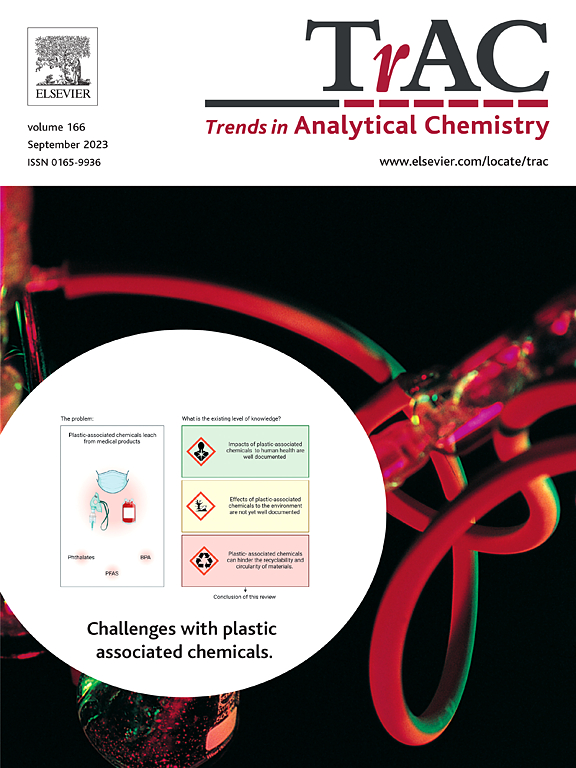Advances in biosensor technologies for infectious diseases detection
IF 11.8
1区 化学
Q1 CHEMISTRY, ANALYTICAL
引用次数: 0
Abstract
Being responsible for almost 15 % of the deaths globally, infectious diseases (IDs) are considered as a major health challenge, which was lately emphasized by the COVID-19 pandemic once again. Data form COVID pandemic revealed that early and timely detection of pathogens plays an undeniable role in controlling the spread of the disease and provides a time-effective medical interventions and more efficient disease management. To address the shortcomings of the traditional methods, the emergence of biosensors facilitated fast, accurate, robust, real-time, and on-site detection of various pathogens. In this paper, the recent advances in the development of biosensing technologies for detection of IDs are comprehensively explored considering their both detection methods (electrochemical, electrochemiluminescence, and capacitive) as well as proposed biorecognition elements (antibodies, aptamers, natural DNA fragments). Furthermore, the role of nanomaterials in enhancing the biosensors’ performance are highlighted, while other innovative fluidics, such as paper-based microfabricated systems, are also considered.
用于检测传染病的生物传感器技术的进步
传染病(IDs)造成的死亡人数几乎占全球死亡人数的 15%,被认为是一项重大的健康挑战,最近 COVID-19 大流行再次强调了这一点。COVID 大流行的数据显示,病原体的早期和及时检测在控制疾病传播方面发挥着不可否认的作用,并提供了具有时间效益的医疗干预和更有效的疾病管理。针对传统方法的不足,生物传感器的出现促进了对各种病原体的快速、准确、可靠、实时和现场检测。本文全面探讨了用于检测 IDs 的生物传感技术的最新进展,包括检测方法(电化学、电化学发光和电容)以及拟议的生物识别元素(抗体、适配体、天然 DNA 片段)。此外,还强调了纳米材料在提高生物传感器性能方面的作用,同时还考虑了其他创新的流体技术,如基于纸张的微加工系统。
本文章由计算机程序翻译,如有差异,请以英文原文为准。
求助全文
约1分钟内获得全文
求助全文
来源期刊

Trends in Analytical Chemistry
化学-分析化学
CiteScore
20.00
自引率
4.60%
发文量
257
审稿时长
3.4 months
期刊介绍:
TrAC publishes succinct and critical overviews of recent advancements in analytical chemistry, designed to assist analytical chemists and other users of analytical techniques. These reviews offer excellent, up-to-date, and timely coverage of various topics within analytical chemistry. Encompassing areas such as analytical instrumentation, biomedical analysis, biomolecular analysis, biosensors, chemical analysis, chemometrics, clinical chemistry, drug discovery, environmental analysis and monitoring, food analysis, forensic science, laboratory automation, materials science, metabolomics, pesticide-residue analysis, pharmaceutical analysis, proteomics, surface science, and water analysis and monitoring, these critical reviews provide comprehensive insights for practitioners in the field.
 求助内容:
求助内容: 应助结果提醒方式:
应助结果提醒方式:


